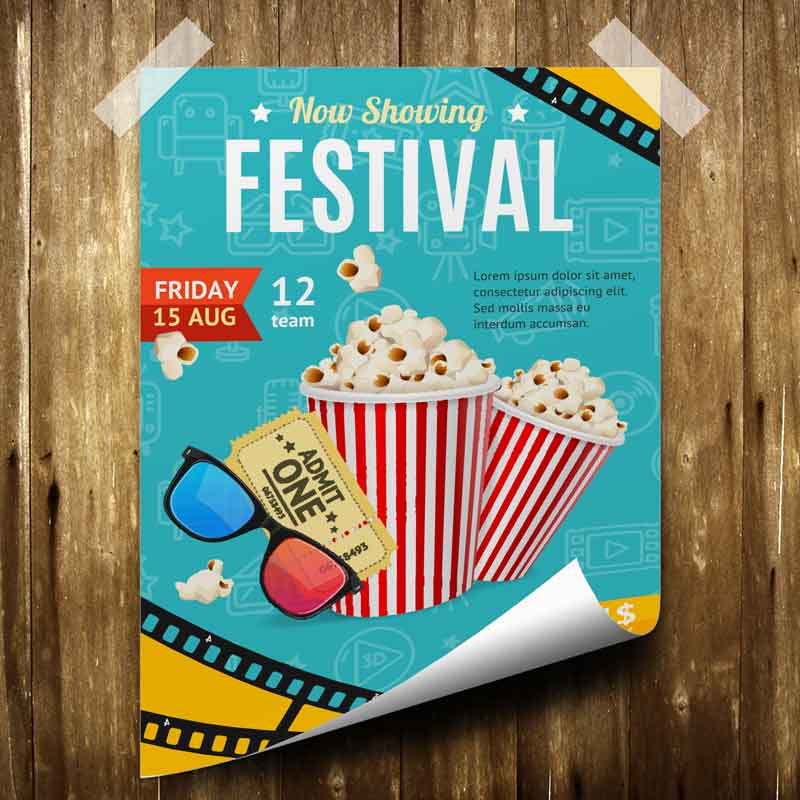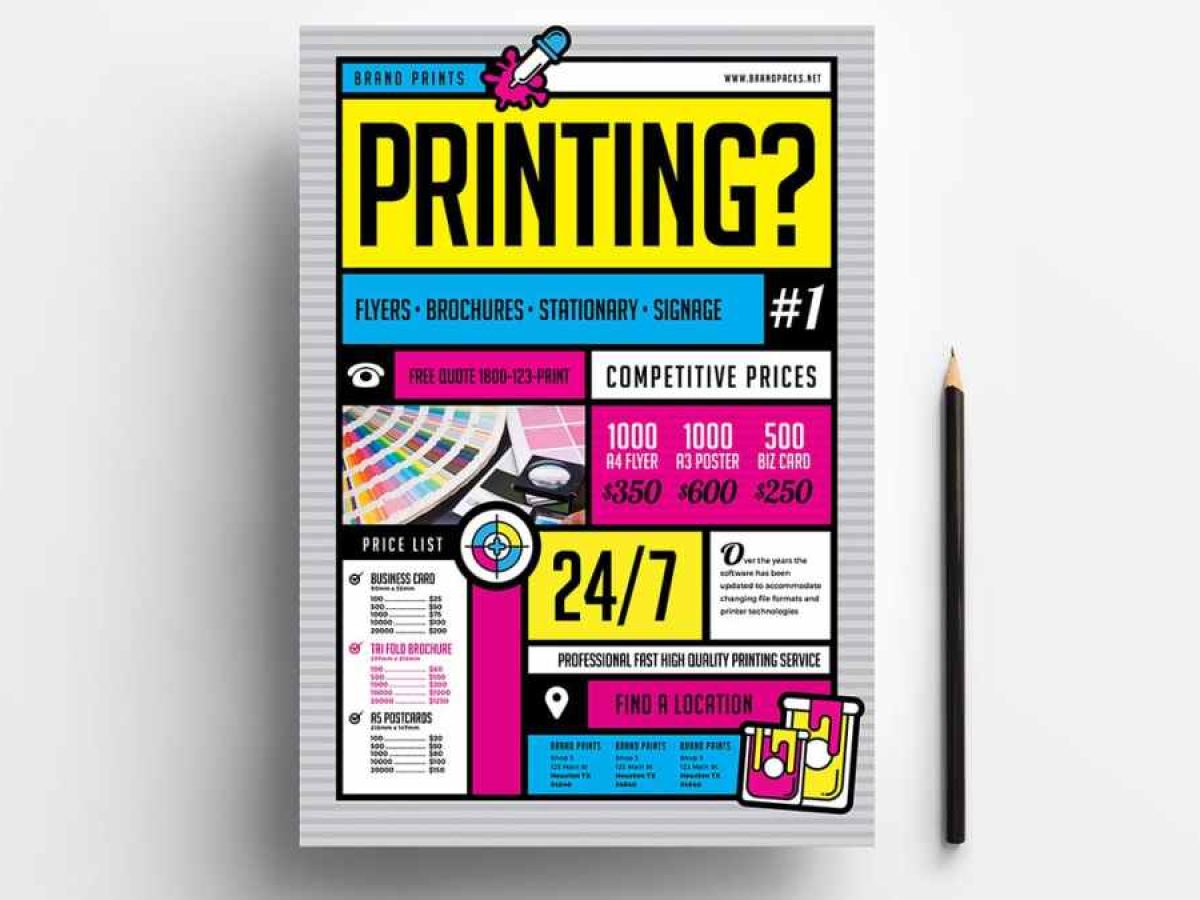Poster printing near me: What size, format, and placement perform well?
Poster printing near me: What size, format, and placement perform well?
Blog Article
Essential Tips for Effective Poster Printing That Astounds Your Target Market
Developing a poster that absolutely astounds your audience needs a critical approach. You require to recognize their preferences and rate of interests to customize your design successfully. Picking the ideal size and format is important for exposure. Top notch photos and strong fonts can make your message stand apart. There's more to it. What about the emotional impact of shade? Allow's explore how these components function with each other to create an excellent poster.
Understand Your Target Market
When you're designing a poster, comprehending your target market is vital, as it shapes your message and layout choices. Initially, think of that will certainly see your poster. Are they pupils, experts, or a general group? Understanding this aids you tailor your language and visuals. Usage words and photos that reverberate with them.
Next, consider their rate of interests and needs. What details are they looking for? Align your content to address these factors directly. For example, if you're targeting trainees, involving visuals and appealing expressions might get their focus even more than formal language.
Lastly, consider where they'll see your poster. Will it be in a busy hallway or a quiet café? This context can affect your style's shades, fonts, and format. By keeping your target market in mind, you'll produce a poster that successfully interacts and captivates, making your message remarkable.
Choose the Right Size and Format
Exactly how do you select the ideal size and style for your poster? Start by taking into consideration where you'll display it. If it's for a big event, select a bigger dimension to assure visibility from a distance. Consider the area available as well-- if you're restricted, a smaller poster may be a better fit.
Next, select a layout that matches your material. Horizontal formats work well for landscapes or timelines, while upright styles fit portraits or infographics.
Don't fail to remember to check the printing choices offered to you. Numerous printers supply conventional sizes, which can conserve you time and money.
Lastly, keep your audience in mind (poster printing near me). Will they read from afar or up shut? Tailor your dimension and style to enhance their experience and engagement. By making these selections very carefully, you'll produce a poster that not just looks excellent however additionally effectively connects your message.
Select High-Quality Images and Graphics
When creating your poster, selecting high-grade images and graphics is necessary for an expert appearance. Ensure you select the ideal resolution to avoid pixelation, and take into consideration making use of vector graphics for scalability. Do not ignore color equilibrium; it can make or break the general appeal of your style.
Choose Resolution Wisely
Selecting the right resolution is essential for making your poster stand out. If your pictures are low resolution, they might show up pixelated or blurred once published, which can diminish your poster's influence. Spending time in selecting the appropriate resolution will pay off by creating an aesthetically spectacular poster that records your target market's attention.
Make Use Of Vector Graphics
Vector graphics are a video game changer for poster style, offering unparalleled scalability and high quality. Unlike raster photos, which can pixelate when enlarged, vector graphics keep their intensity despite the size. This suggests your styles will certainly look crisp and expert, whether you're publishing a small leaflet or a substantial poster. When developing your poster, select vector documents like SVG or AI formats for logo designs, symbols, and pictures. These layouts enable simple manipulation without losing top quality. Additionally, make particular to incorporate top notch graphics that align with your message. By using vector graphics, you'll assure your poster captivates your audience and attracts attention in any type of setting, making your layout initiatives really beneficial.
Consider Color Balance
Color balance plays an important function in the overall impact of your poster. Too many bright shades can bewilder your target market, while boring tones may not get attention.
Choosing top quality images is vital; they need to be sharp and vivid, making your poster aesthetically appealing. Prevent pixelated or low-resolution graphics, as they can detract from your professionalism and trust. Consider your target audience when selecting shades; various colors evoke various feelings. Finally, examination your shade selections on different displays and print styles to see just how they equate. A well-balanced color pattern will certainly make your poster stand out and reverberate with audiences.
Select Bold and Legible Fonts
When it involves font styles, dimension truly matters; you desire your text to be conveniently understandable from a distance. Limitation the number of font kinds to keep your poster looking tidy and professional. Don't forget to make use of contrasting colors for quality, ensuring your message stands out.
Typeface Size Issues
A striking poster grabs focus, and font size plays a crucial function in that preliminary impact. You want your message to be quickly legible from a range, so choose a font size that stands out.
Do not fail to remember regarding pecking order; larger dimensions for headings direct your target market with the info. Eventually, the best font dimension not just draws in customers however also maintains them involved with your material.
Limit Font Kind
Choosing the best typeface types is crucial for ensuring your poster grabs attention and successfully connects your message. Stick to consistent font style dimensions and weights to create a pecking order; this aids direct your target market via the information. Keep in mind, quality is key-- selecting vibrant and readable fonts will certainly make your poster stand out and maintain your target market engaged.
Contrast for Clearness
To guarantee your poster records focus, it is crucial to use vibrant and legible font styles that produce strong comparison versus the background. Choose colors that stand out; for instance, dark message on a light background or vice versa. With the best font choices, your poster will certainly radiate!
Use Color Psychology
Color styles can evoke feelings and influence assumptions, making them a powerful device in poster design. Consider your target market, too; different societies may analyze colors distinctively.

Keep in mind that color combinations can influence readability. Evaluate your selections by going back and examining the overall impact. If you're intending for a specific emotion or feedback, don't be reluctant to experiment. Inevitably, utilizing shade psychology properly can create an enduring impact and draw your audience in.
Include White Area Successfully
While it might appear counterintuitive, including white room effectively is vital for an effective poster layout. White room, or negative space, isn't just empty; it's a powerful element that enhances readability and focus. When you offer your message and photos area to take a breath, your target market can conveniently absorb the details.

Usage white room to develop a visual hierarchy; this guides the viewer's eye to one of the most important components of your poster. Bear in mind, much less is commonly a lot more. By grasping the art of white area, you'll create a striking and effective poster that astounds your audience and connects your message clearly.
Think About the Printing Materials and Techniques
Selecting the appropriate printing materials and strategies can substantially improve the general effect of your poster. First, consider the sort of paper. Glossy paper can make shades pop, while matte paper uses a much more controlled, professional appearance. If your poster will be displayed outdoors, select weather-resistant materials to ensure sturdiness.
Following, consider printing methods. Digital printing is great for vivid colors and fast turn-around times, while offset printing is ideal for big quantities and regular high quality. Do not fail to remember to discover specialty coatings like laminating or UV covering, which can shield your poster and add a sleek touch.
Finally, examine your budget. Higher-quality materials often come at a costs, so equilibrium high quality with price. By carefully choosing your printing website products and techniques, you can produce an aesthetically spectacular poster that successfully connects your message and captures your target market's focus.
Frequently Asked Concerns
What Software program Is Best for Designing Posters?
When creating posters, software program like Adobe Illustrator and Canva stands apart. You'll discover their straightforward user interfaces and extensive tools make it simple to develop stunning visuals. Explore both to see which matches you ideal.
How Can I Guarantee Shade Precision in Printing?
To assure color accuracy in printing, you ought to calibrate your screen, usage shade accounts specific to your printer, and print test samples. These actions assist you attain the dynamic shades you imagine for your poster.
What Documents Formats Do Printers Prefer?
Printers generally like data styles like PDF, TIFF, and EPS for their high-grade output. These formats keep clarity and color integrity, ensuring your design looks sharp and professional when published - poster printing near me. Stay clear of making use of low-resolution layouts
Just how Do I Determine the Print Run Amount?
To determine your print run quantity, consider your target market size, budget, and circulation plan. Estimate the number of you'll need, considering prospective waste. Adjust based upon past experience or comparable jobs to guarantee you satisfy demand.
When Should I Beginning the Printing Process?
You should begin the printing process as quickly as you complete your style and collect all necessary approvals. Ideally, allow enough lead time for modifications and unforeseen delays, going for a minimum of 2 weeks prior to your deadline.
Report this page